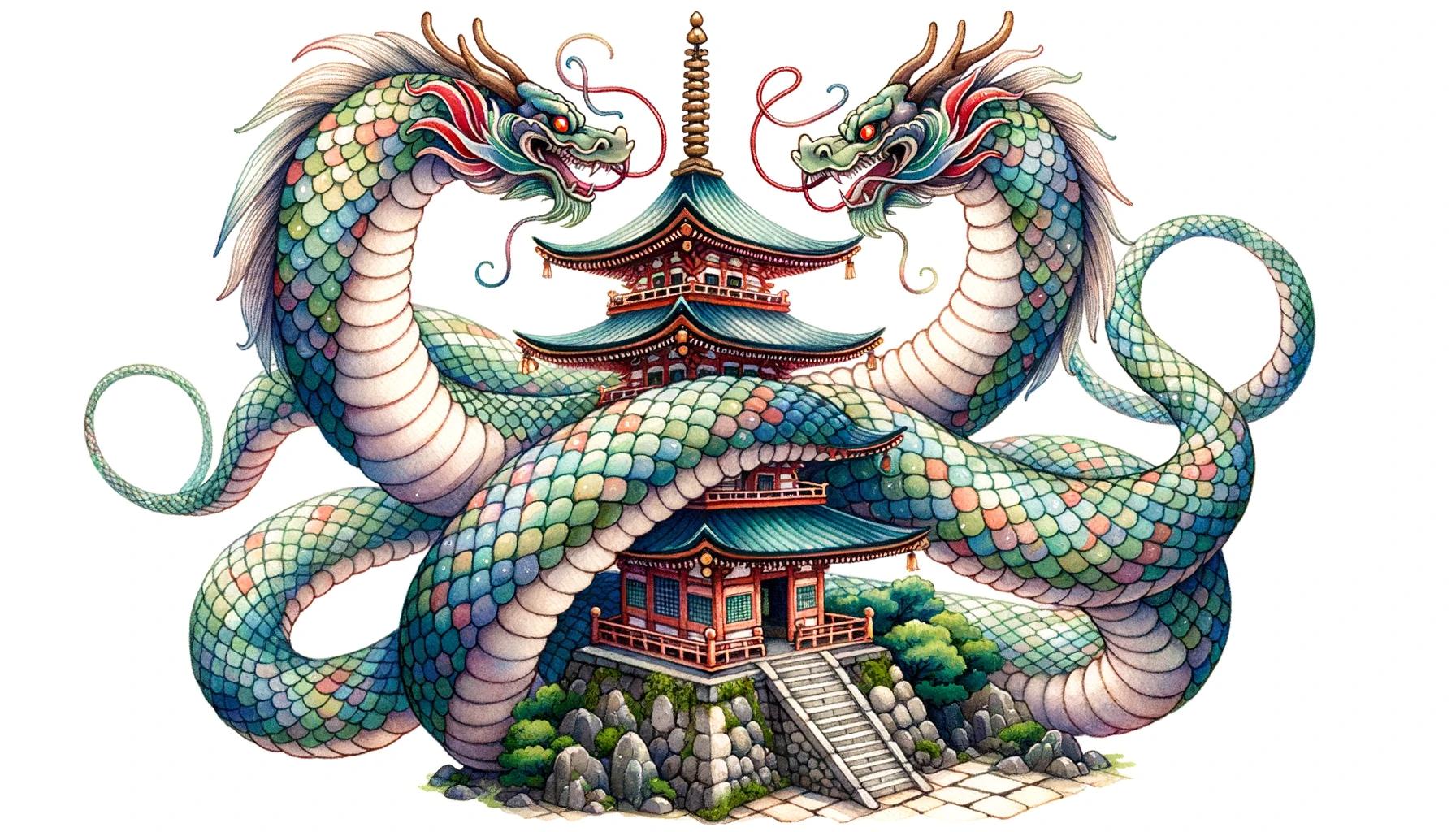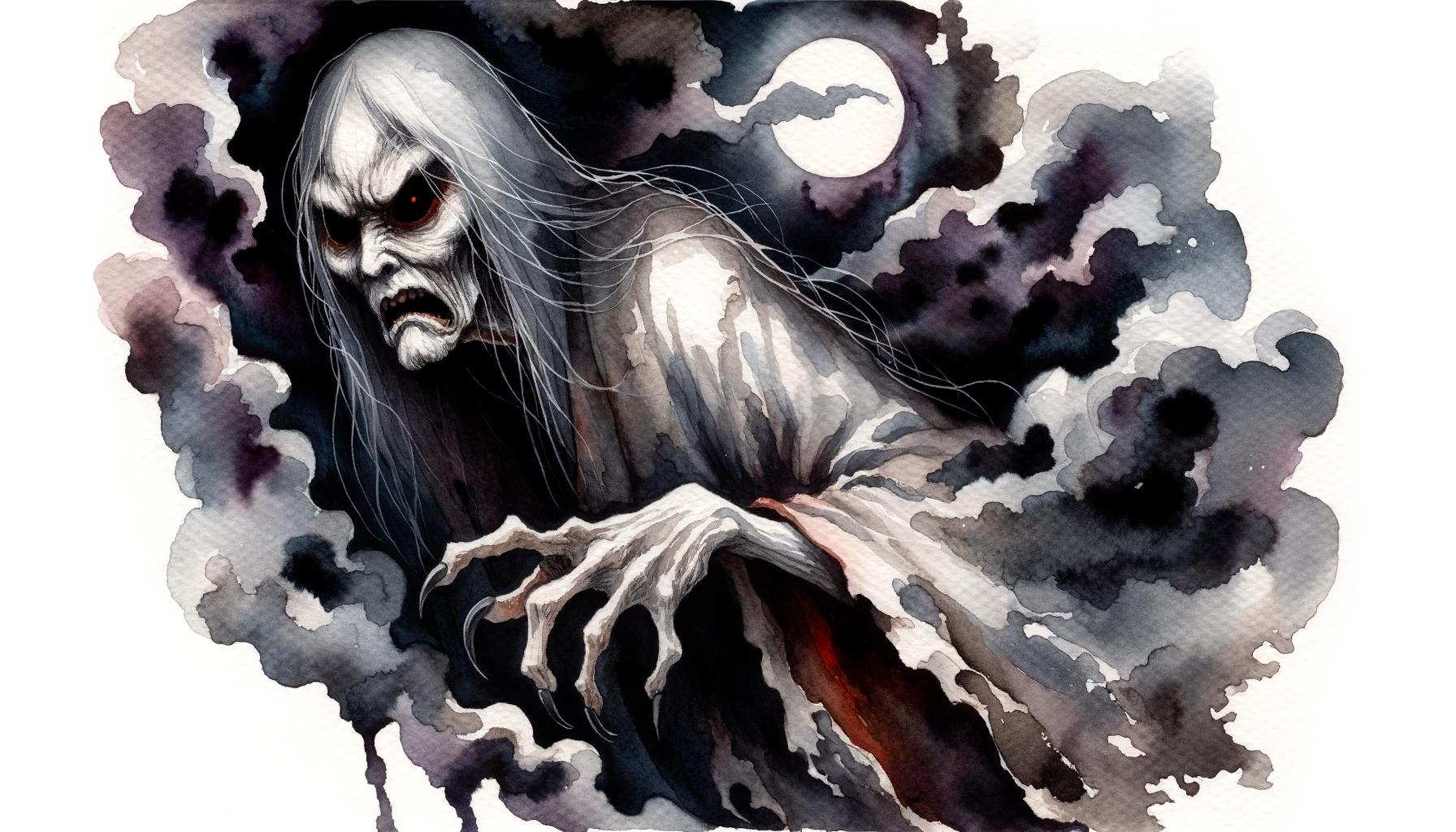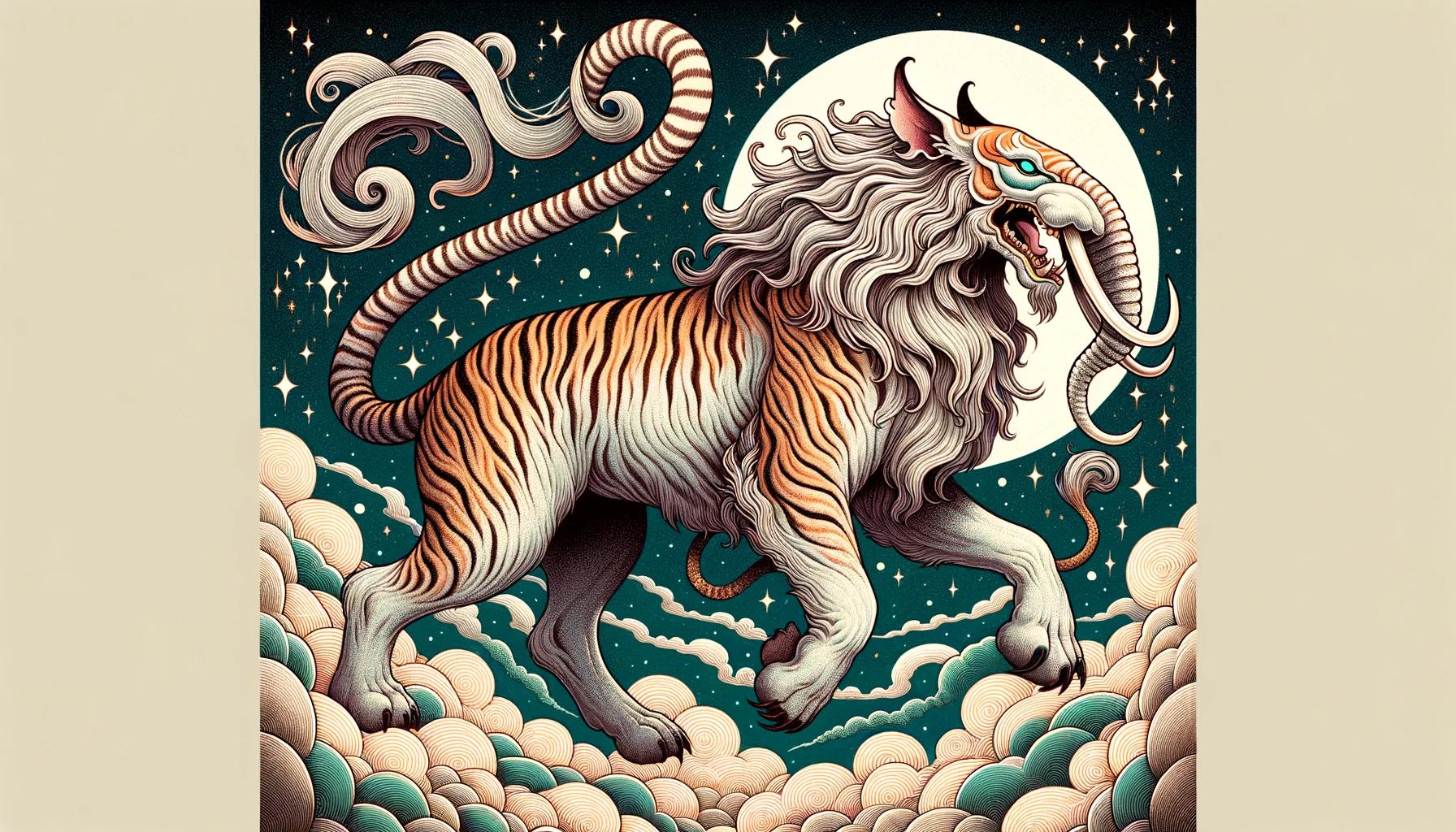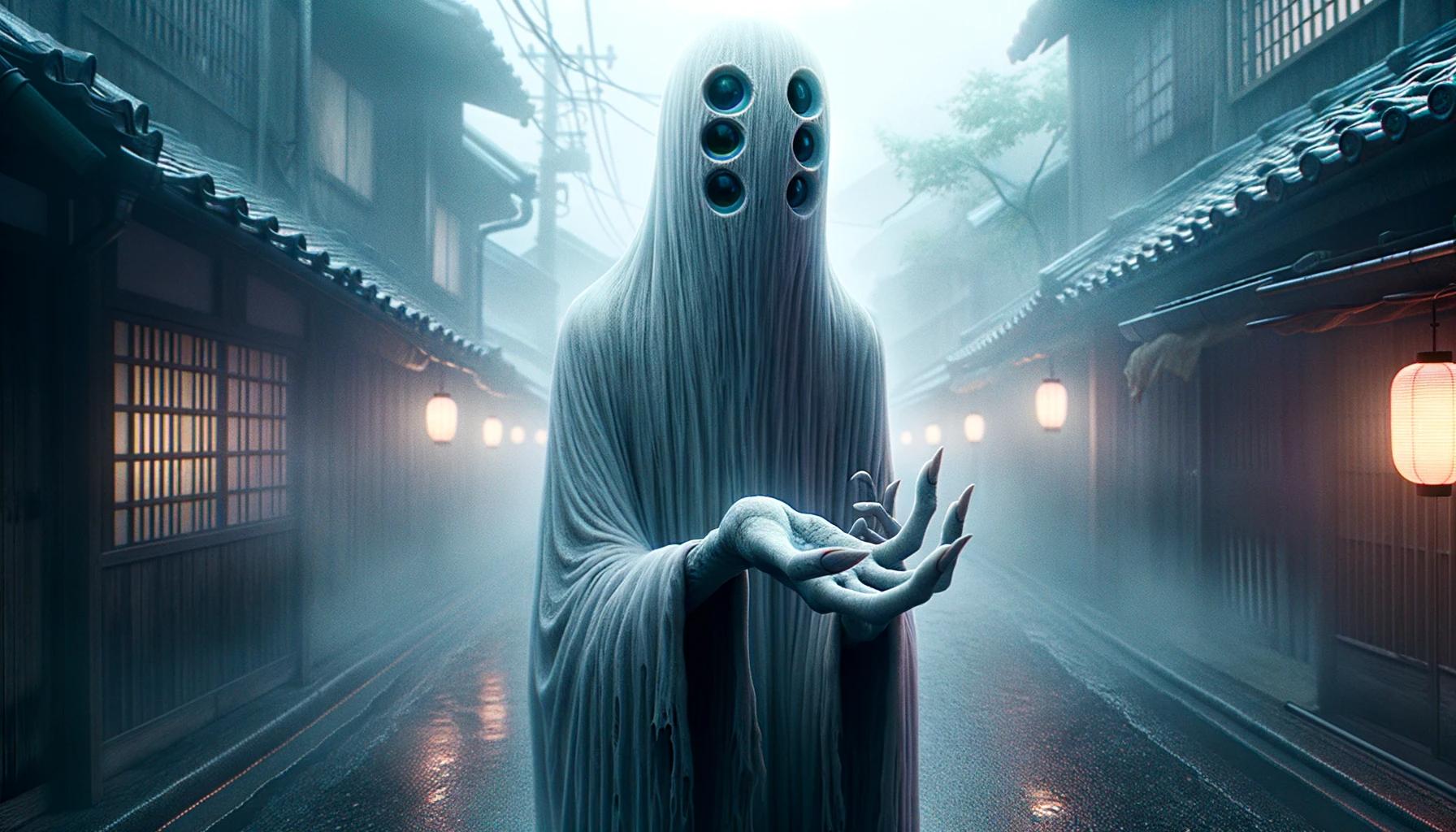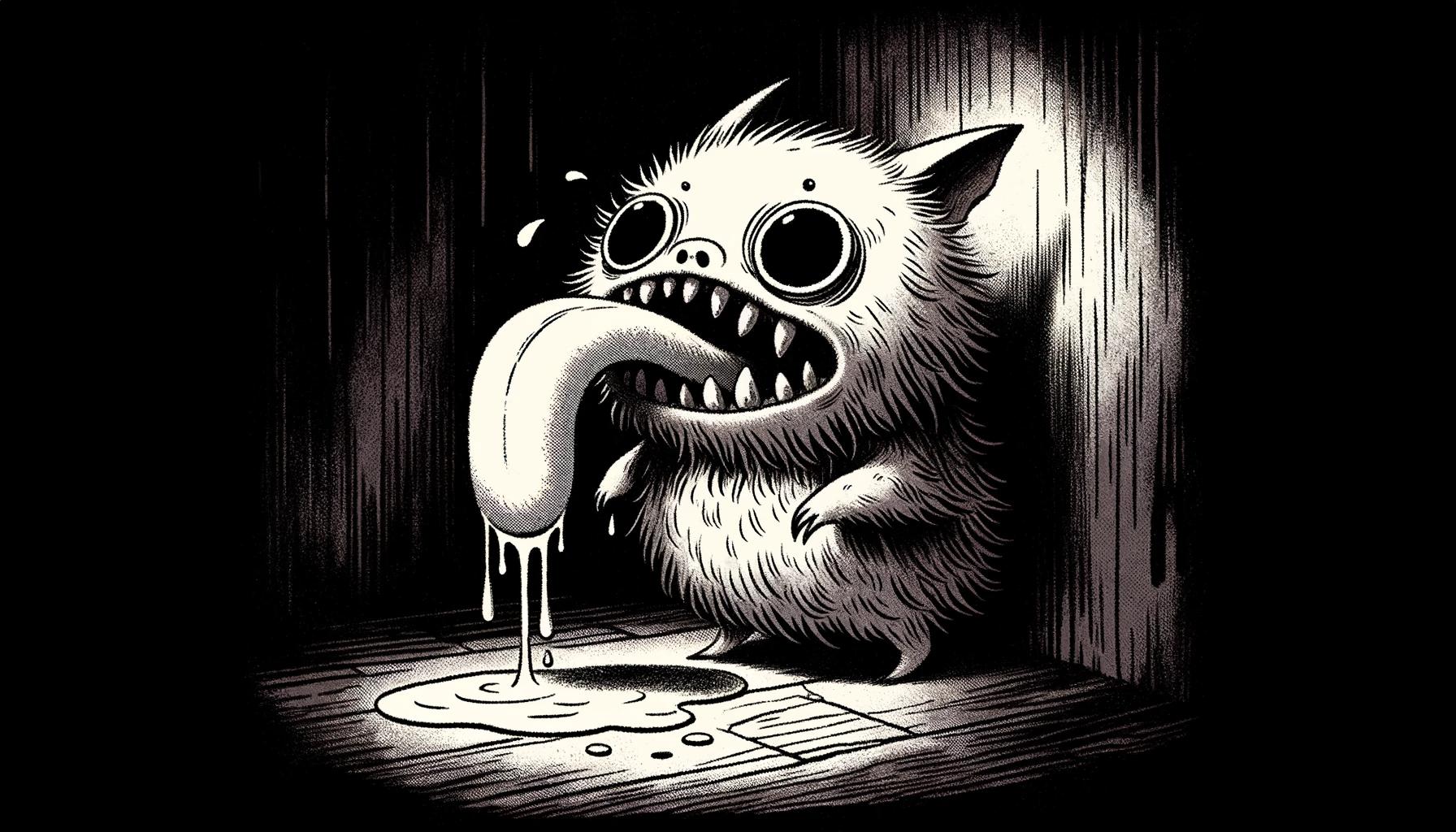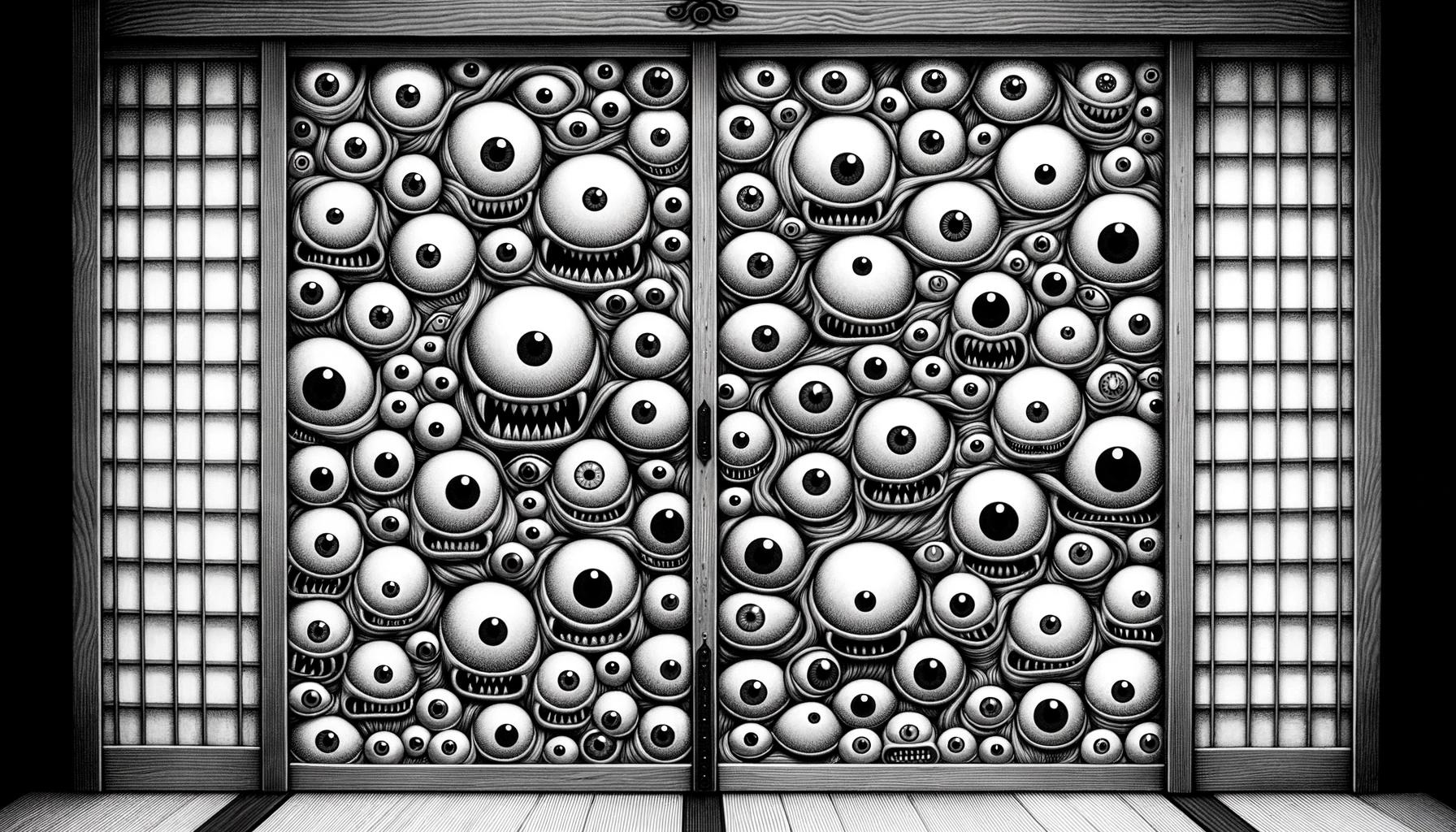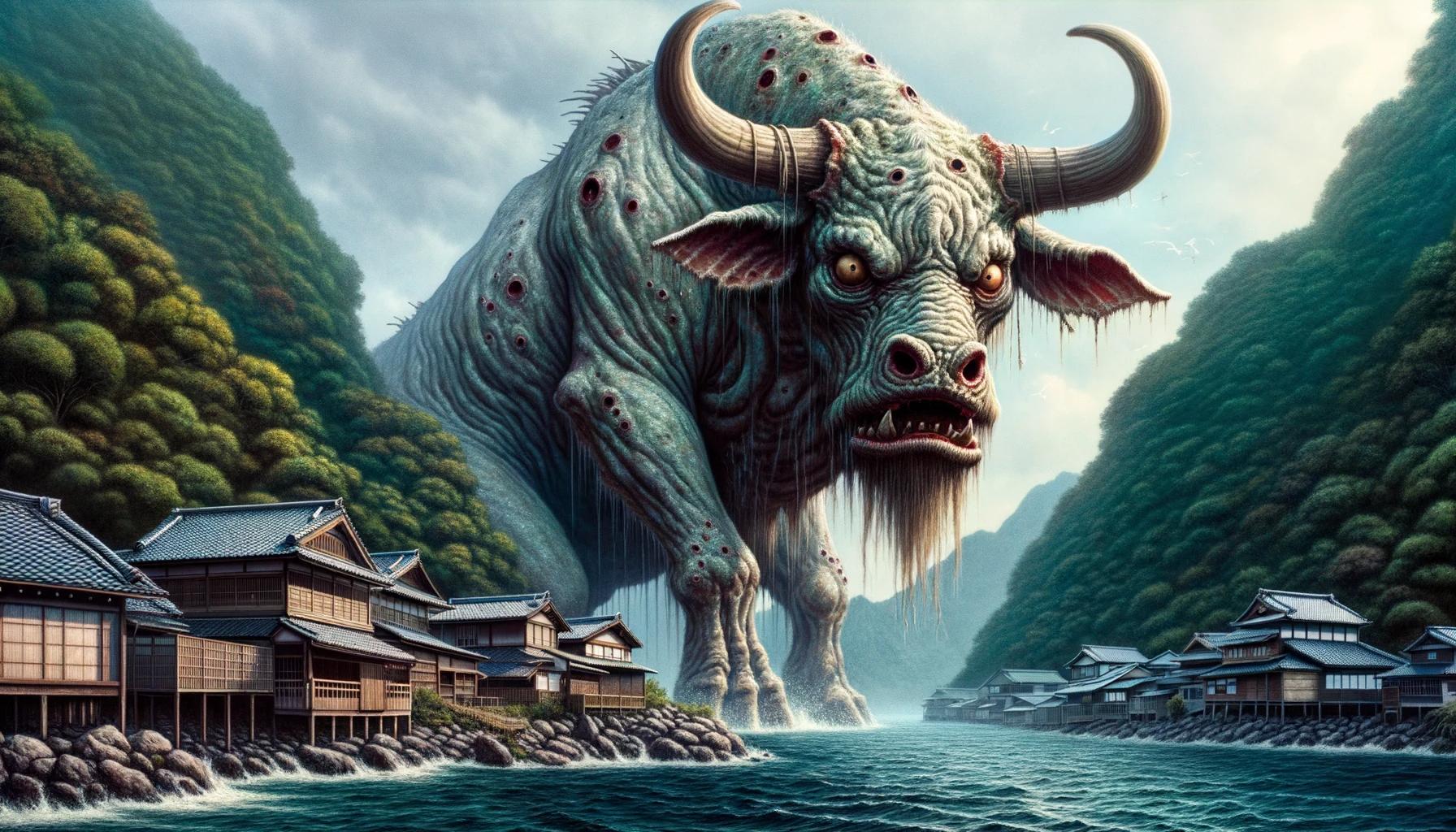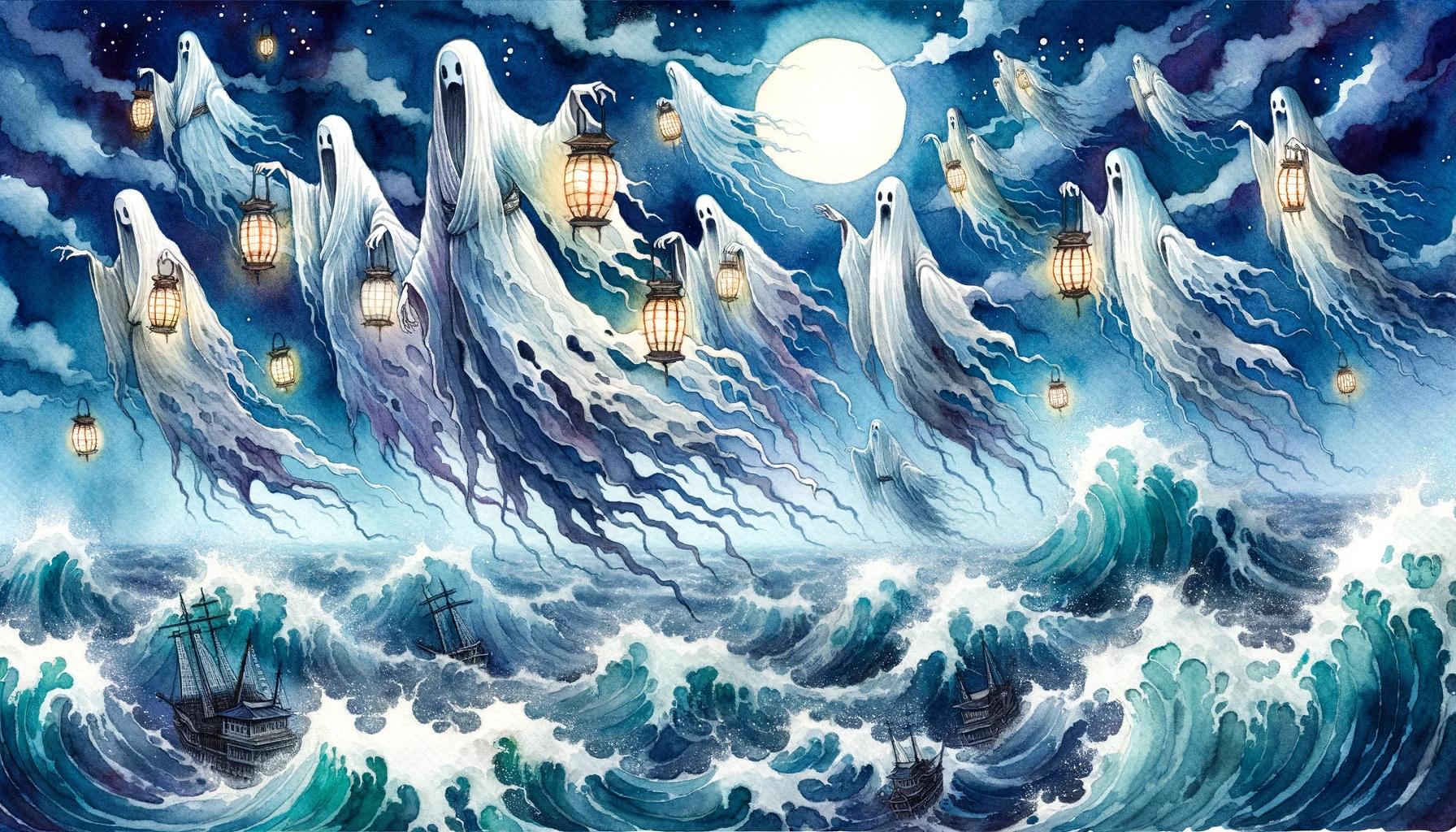‘Kiyohime Yokai: Exploring the Legend and Artistry of this Japanese Demon’
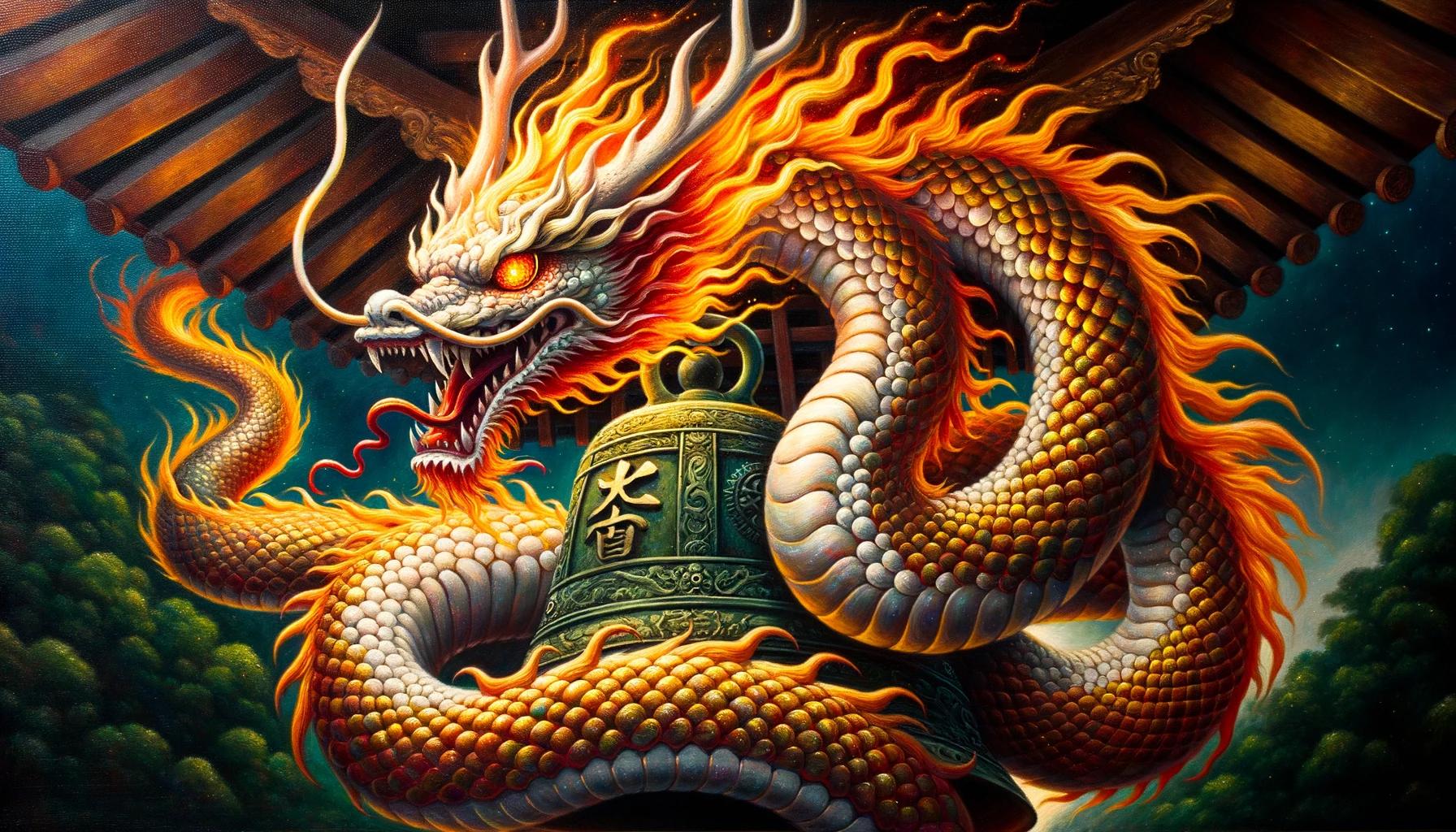
Kiyohime Yokai, one of the most renowned yokai in Japanese literature, embodies the tale of Anchin and Kiyo Hime. This ancient legend from Wakayama Prefecture revolves around a beautiful young priest and Kiyo Hime, the daughter of the mansion’s lord.
Kiyo Hime’s unrequited love transforms her into a wrathful serpent yokai, seeking revenge on Anchin. This article explores the significance of Kiyohime Yokai in Japanese art, folklore, and its enduring influence on contemporary culture.
Additionally, it delves into the themes of love, betrayal, and retribution within this captivating legend.
The Legend of Kiyohime Yokai
The legend of Kiyohime Yokai is a captivating tale that has fascinated Japanese culture for centuries. It revolves around the story of Anchin and Kiyo Hime, showcasing themes of love, betrayal, and revenge.
The Tale of Anchin and Kiyo Hime
Anchin, a young and handsome priest, embarks on an annual pilgrimage from Mutsu to Kumano and seeks shelter at the Masago no Shoji family mansion. It is here that Kiyo Hime, the daughter of the mansion’s lord, falls deeply in love with Anchin.
In a playful manner, Anchin promises to marry her if she behaves well during his stay. However, upon his return from the pilgrimage, Anchin fails to keep his promise and evades Kiyo Hime’s affections.
The Transformations of Kiyo Hime
Devastated by Anchin’s betrayal, Kiyo Hime’s sadness gradually transforms into rage and vengeance. She relentlessly chases after Anchin, who seeks divine intervention and prays to Kumano Gongen for help. Through this divine intervention, Kiyo Hime is momentarily paralyzed, allowing Anchin to escape her clutches.
Enraged by his escape, Kiyo Hime transforms into a fearsome giant serpent that spews fire.
The Symbolism of the Bell and Fire
The story takes a tragic turn as Anchin pays a ferryman to prevent Kiyo Hime from reaching him. Desperate to seek refuge, Anchin finds solace at the Dōjō-ji temple. In an act of revenge, Kiyo Hime wraps her serpentine body around the temple bell, engulfing Anchin in a fiery embrace, leading to his demise.
The bell’s fiery symbolism represents the destructive power of unrequited love and the tragic consequences that follow.
As the tale of Kiyohime Yokai unfolds, it delves into the complexities of human emotions and the consequences of broken promises.
The transformation of Kiyo Hime and the symbolism of the bell and fire serve as powerful vehicles to explore themes of love, betrayal, and tragedy in Japanese folklore.
Understanding Yokai in Japanese Folklore
The rich tradition of Japanese folklore includes a wide array of supernatural beings known as yokai.
These creatures play a significant role in Japanese culture, captivating the imaginations of both young and old. In this section, we will delve into the fascinating realm of yokai, exploring their origins, characteristics, and cultural significance within Japanese society.
Yokai: Supernatural Beings in Japanese Culture
Yokai are supernatural beings deeply rooted in Japanese belief systems and folklore. They are often described as mischievous, mysterious, or malevolent entities that exist alongside humans. Yokai can take on various forms, ranging from animals and monsters to spirits and demons.
They inhabit both the natural and spiritual realms, blurring the boundaries between the tangible and the intangible.
Types of Yokai: Oni, Kitsune, Nekomata, and More
Within the world of yokai, there exists a diverse array of creatures, each with its unique characteristics and mythological origins. Some notable examples include:
- Oni: These powerful and fearsome ogre-like creatures often represent evil and chaos.
They are depicted with muscular bodies, horns, and sometimes multiple eyes.
- Kitsune: Fox spirits known for their shapeshifting abilities and trickster nature. They are associated with intelligence, cunning, and their love for mischief.
- Nekomata: Cat yokai characterized by their split tails and supernatural abilities.
They are often portrayed as sly and vindictive, capable of controlling the dead.
- And many more: The world of yokai is vast and encompasses numerous other creatures, such as Tengu, Tanuki, and Kappa, each with its distinct traits and cultural significance.
Kiyohime Yokai: Characteristics and Origins
Among the diverse pantheon of yokai, Kiyohime holds a prominent place.
Kiyohime is a specific type of yokai associated with the timeless legend of Anchin and Kiyo Hime. This yokai embodies themes of love, betrayal, and revenge, making her a fascinating and powerful figure within Japanese folklore.
Kiyohime’s transformation from a lovelorn woman into a wrathful serpent yokai showcases the intricate interplay between human emotions and the supernatural realm.
The origins of Kiyohime Yokai can be traced back to ancient tales originating from the Wakayama Prefecture in Japan, where her legend has been passed down through generations.
As a symbol of unrequited love and the consequences of broken promises, Kiyohime Yokai continues to captivate audiences with her tragic and haunting story.
Join us as we further explore the cultural significance, artistic portrayals, and enduring legacy of Kiyohime Yokai in the rest of this comprehensive article.
Exploring the Cultural Significance of Kiyohime Yokai
Kiyohime yokai holds immense cultural significance in Japan, particularly in its literature, art, and traditional performances. This section delves into the various aspects that illustrate the profound impact of Kiyohime yokai on Japanese culture.
Kiyohime in Japanese Literature and Art
The captivating tale of Kiyohime yokai has left an indelible mark on Japanese literature and art. Numerous works, including novels, poems, and paintings, have depicted the tragic and vengeful spirit of Kiyohime.
These portrayals explore themes of unrequited love, betrayal, and the consequences of broken promises, showcasing the deep emotional resonance that Kiyohime’s story holds within Japanese artistic expression.
Kiyohime Yokai and Japanese Social Media
In the digital age, Kiyohime yokai continues to capture the attention of Japanese social media platforms.
Memes, illustrations, and discussions surrounding Kiyohime abound, as internet users explore the character’s complex emotions and the moral lessons embedded within the legend. Through hashtags and online communities, Kiyohime yokai has become a subject of fascination and interpretation, fostering a vibrant online discourse.
Kiyohime Yokai in Traditional Performances: Noh Plays and Kabuki
Kiyohime yokai’s impact extends beyond literature and art into the realm of traditional Japanese performances. Noh plays and Kabuki, renowned theatrical forms, have adapted and showcased the tale of Kiyohime with their unique stylizations.
These performances bring Kiyohime’s fiery wrath, heartbreaking transformation, and tragic fate to life on stage, captivating audiences and illustrating the enduring relevance of this yokai in Japanese cultural heritage.
Unraveling the Themes of Love, Betrayal, and Revenge
Unraveling the intricate web of emotions, ‘Kiyohime Yokai’ delves into the profound themes of love, betrayal, and revenge within the captivating legend of Anchin and Kiyo Hime.
This section explores three crucial aspects that drive the narrative: ‘Love and Betrayal: Anchin’s Promise to Kiyohime,’ ‘From Despair to Rage: Kiyohime’s Transformation,’ and ‘Retribution and Tragedy: Anchin’s Fate and Kiyo Hime’s Sacrifice.’
Love and Betrayal: Anchin’s Promise to Kiyohime
In this tale of forbidden affection, Anchin, a young and handsome priest, playfully promises Kiyo Hime, the daughter of the Masago no Shōji family, that he will marry her if she behaves.
However, Anchin fails to fulfill his promise, leaving Kiyohime heartbroken. This subtheme examines the complex dynamics of love, trust, and the consequences of broken vows.
From Despair to Rage: Kiyohime’s Transformation
Kiyohime’s unrequited love turns into an overwhelming fury that triggers a drastic transformation.
As her sadness morphs into anger, Kiyohime assumes the form of a colossal serpent yokai, capable of breathing fire. This section delves into the psychological journey of Kiyohime as she undergoes a metamorphosis fueled by rejection and emotions pushed to their limits.
Retribution and Tragedy: Anchin’s Fate and Kiyo Hime’s Sacrifice
The fateful consequences of Anchin’s betrayal and Kiyo Hime’s relentless pursuit come to a tragic climax. With divine intervention momentarily saving Anchin, he seeks refuge at the Dōjō-ji temple. However, Kiyohime’s vengeance knows no bounds, and she envelops the temple’s bell in her wrathful embrace, bringing about Anchin’s ultimate demise.
This subtopic explores the devastating path of retribution and the heartbreaking sacrifice Kiyo Hime ultimately makes.
The Legacy of Kiyohime Yokai in Modern Culture
Kiyohime Yokai, with its captivating tale and mystical allure, continues to leave an indelible mark on modern culture. Its themes of love, betrayal, and revenge have found resonance in various forms of media, including books, films, and popular adaptations.
Kiyohime Yokai’s enduring presence serves as a testament to its cultural significance and impact in contemporary society.
Kiyohime Yokai in Contemporary Books and Films
In the realm of literature, Kiyohime Yokai has captured the imaginations of many authors who have reimagined the legend in their works. These contemporary books explore the complex emotions and moral dilemmas faced by the characters, offering new perspectives on the enduring tale.
Likewise, filmmakers have also embraced the allure of Kiyohime Yokai, bringing the legend to life on the silver screen through visually stunning and emotionally gripping adaptations.
Kiyohime Yokai in Popular Culture and Adaptations
Beyond books and films, Kiyohime Yokai has made its way into various facets of popular culture. Its imagery and symbolism have inspired artists, musicians, and even fashion designers. The striking visual representation of Kiyohime Yokai, particularly as a serpent yokai spewing fire, has become an iconic figure in contemporary art and design.
Additionally, its presence can be felt in anime, manga, and video games, where the legend continues to captivate and entertain audiences of all ages.
Kiyohime Yokai: Lessons and Moral Messages
While Kiyohime Yokai has certainly captivated audiences with its gripping narrative and visual appeal, the legend also carries profound moral messages and life lessons. The tale serves as a cautionary reminder about the consequences of broken promises, the destructive power of unchecked emotions, and the importance of empathy and understanding in relationships.
Kiyohime Yokai’s legacy goes beyond mere entertainment, offering valuable insights into human nature and the complexities of love and vengeance.
Exploring Related Yokai and Folklore
In addition to Kiyohime Yokai, Japanese folklore is rich with captivating creatures and mythical beings. Let’s delve into some intriguing yokai that are closely associated with Kiyohime and have their own fascinating narratives.
The Mysterious Kappa: Water Creatures in Japanese Folklore
One of the most infamous yokai in Japanese folklore is the kappa, a water-dwelling creature often depicted as a mischievous and amphibious humanoid. Legends tell of their love for cucumbers and their ability to challenge humans to sumo matches.
Their affinity for water and their mischievous nature make them an intriguing counterpart to Kiyohime Yokai.
Tengu: Legendary Bird-like Yokai in Japanese Mythology
Tengu are mythical creatures known for their bird-like features, such as wings and a long beak. These yokai are often associated with mountains, where they are believed to possess great knowledge and supernatural powers.
Tengu are both feared and respected, and they serve as guardians or antagonists in various folktales. Their presence in Japanese mythology adds depth to the exploration of yokai in relation to Kiyohime.
Serpent Yokai: Symbolism and Representations in Japanese Culture
In Japanese culture, serpents hold significant symbolism and are frequently associated with yokai. Serpent yokai, like Kiyohime, represent various themes such as transformation, vengeance, and the destructive power of unchecked emotions.
Exploring their symbolism enhances our understanding of Kiyohime’s tale and the broader cultural significance of serpent yokai in Japan.
The Influence of Kiyohime Yokai in Art and Design
The legendary figure of Kiyohime Yokai has left a significant impact on the world of art and design in Japan. Artists and designers have been inspired by the rich mythology and captivating story surrounding this powerful female demon.
From traditional depictions in Japanese art to contemporary adaptations, Kiyohime Yokai continues to shape artistic expressions.
Japanese Art: Depictions of Kiyohime Yokai
In traditional Japanese art, Kiyohime Yokai is often depicted in various forms, showcasing her transformation from a beautiful woman to a fearsome serpent. Paintings and woodblock prints capture the intense emotions of the tale, highlighting Kiyohime’s sorrow, anger, and ultimate tragedy.
Artists skillfully convey her fiery nature through bold colors and dynamic compositions, capturing the essence of this iconic yokai.
Fashion and Design Inspired by Kiyohime Yokai
The allure and mystique of Kiyohime Yokai have also found their way into the world of fashion and design. Designers draw inspiration from her transformative power, creating garments that embody her strength and passion.
From intricate kimono patterns featuring serpent motifs to avant-garde fashion pieces symbolizing the duality of beauty and fury, Kiyohime’s influence can be seen in contemporary designs that push boundaries and evoke a sense of awe.
Contemporary Interpretations: Kiyohime Yokai Tattoos and Art Installations
In recent years, Kiyohime Yokai has gained popularity in the realm of tattoos and art installations. Tattoo artists skillfully bring her likeness to life, depicting her intricate scale patterns and ferocious gaze.
These tattoos often serve as powerful symbols of transformation, resilience, and the consequences of unrequited love. Additionally, art installations featuring Kiyohime’s serpentine form invite viewers to engage with her story and explore the complex emotions it evokes.
With each passing year, the influence of Kiyohime Yokai continues to be felt in the realms of art and design. She serves as a captivating muse for artists and designers alike, inspiring works that delve into themes of love, betrayal, and the indomitable spirit of women.
Through various artistic mediums, Kiyohime’s legacy lives on, captivating new audiences and ensuring her place in Japan’s rich cultural tapestry.
.











